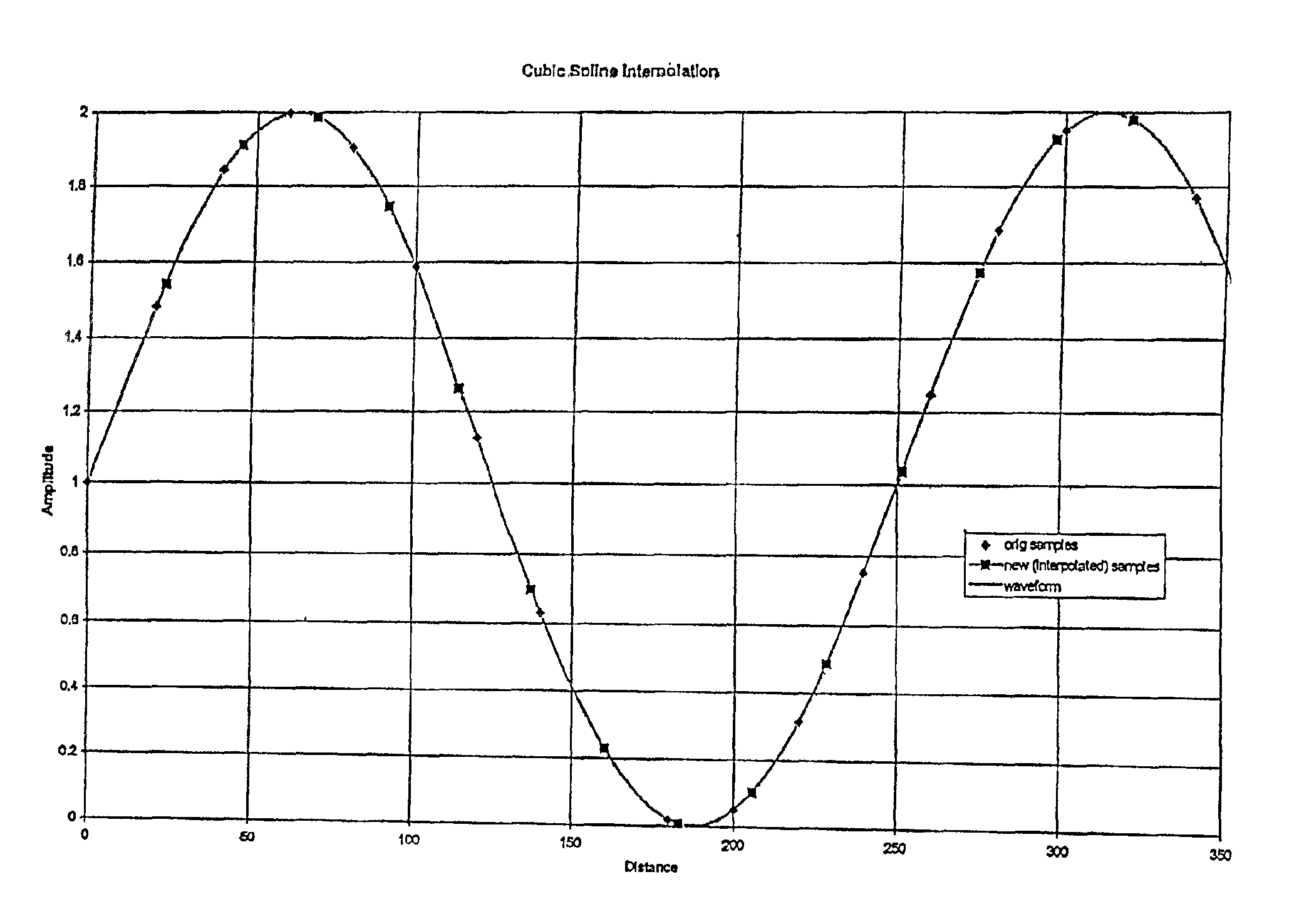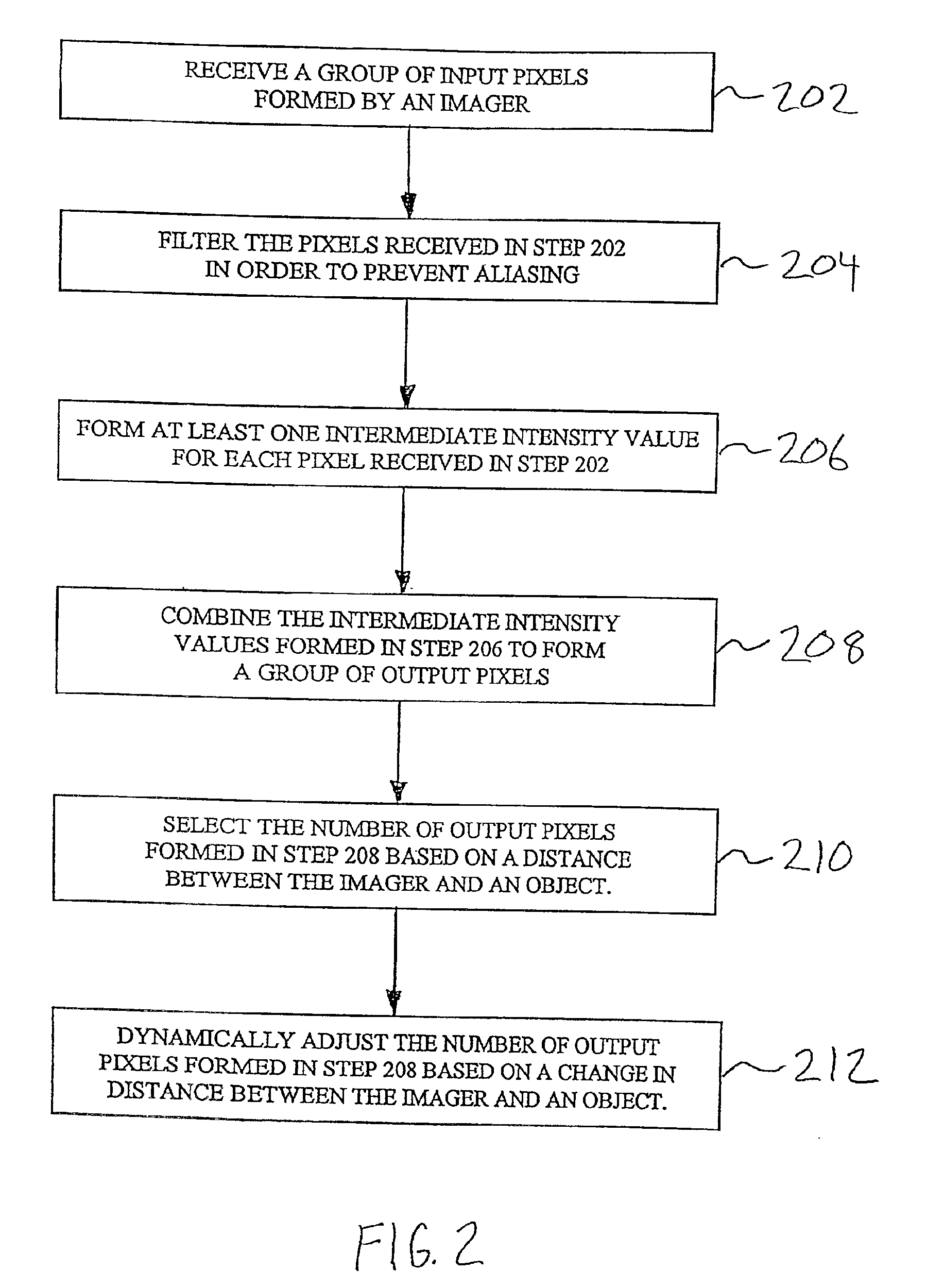Method and system for enhancing the performance of a fixed focal length imaging device
a fixed focal length and imaging device technology, applied in the field of imaging systems, can solve the problems of less than optimal signal-to-noise ratio, less than desirable situation, and inability to achieve the minimum image resolution designed, so as to enhance the performance of the fixed focal length imaging device, the average signal-to-noise ratio of the output pixels may be improved.
- Summary
- Abstract
- Description
- Claims
- Application Information
AI Technical Summary
Benefits of technology
Problems solved by technology
Method used
Image
Examples
example application
of the Present Invention
[0036]The present invention is particularly well adapted for use with an airborne imaging system. As will be described herein, the present invention can be used to enhance the performance of either a pan scan imager or a staring imager of a type typically used for tactical reconnaissance imaging. The present invention is described herein with reference to an airborne imaging system because that is a preferred use of the invention by the inventor. However, as will be apparent to a person skilled in the relevant art given the description of the invention herein, the present invention is not limited to being used only with an airborne imaging system. The present invention can be used to enhance the performance of any imaging device having a fixed focal length. The invention can also be used to convert a variable resolution image to a fixed resolution image.
[0037]As would be known to a person skilled in the relevant art, the resolution of an airborne imaging syst...
example system embodiment
of the Present Invention
[0051]FIG. 5 illustrates a system 500 for enhancing the performance of a fixed focal length imaging device. System 500 converts a group of five input pixels into a group of four output pixels. System 500 comprises a pixel receiving module 510, a pixel weighting module 520, and a pixel combining module 580.
[0052]Pixel receiving module 510 is typically coupled to the output of an imager (not shown). It may be coupled to a digital filter, however. Digital filters may be used to assure that no frequencies above those desired are present in the input pixels received by pixel receiving module 510. This is done to improve signal quality. Pixel receiving module 510 is shown as receiving five input pixels {Y1, Y2, Y3, Y4, Y5} from an input stream of pixels (not shown). Pixel receiving module 510 can receive and temporarily store more or less than five pixels. Pixel receiving module 510 can be a buffer.
[0053]Pixel weighting module 520 is coupled to pixel receiving modu...
example method embodiment
of the Present Invention
[0059]FIG. 2 illustrates a flowchart of a method for enhancing the performance of an imaging device having a fixed focal length according to the present invention. This method can be implemented using system embodiments of the present invention (e.g., system 500), and it is described with reference to the features illustrated in FIG. 5. As described below, the method comprises six steps, of which three steps are optional steps.
[0060]In step 202, a group of input pixels formed by an imager is received and temporarily stored in a memory, e.g., buffer 510. The group of input pixels received in step 202 is variable as described below (i.e., it is not necessarily five pixels as shown in FIG. 5). Typically, the received group of input pixels will be a contiguous series of pixels obtained by the imager.
[0061]In optional step 204, the pixels received in step 202 are filtered in order to prevent aliasing. Step 204 can be performed either before step 202 or after step ...
PUM
 Login to View More
Login to View More Abstract
Description
Claims
Application Information
 Login to View More
Login to View More - R&D
- Intellectual Property
- Life Sciences
- Materials
- Tech Scout
- Unparalleled Data Quality
- Higher Quality Content
- 60% Fewer Hallucinations
Browse by: Latest US Patents, China's latest patents, Technical Efficacy Thesaurus, Application Domain, Technology Topic, Popular Technical Reports.
© 2025 PatSnap. All rights reserved.Legal|Privacy policy|Modern Slavery Act Transparency Statement|Sitemap|About US| Contact US: help@patsnap.com



